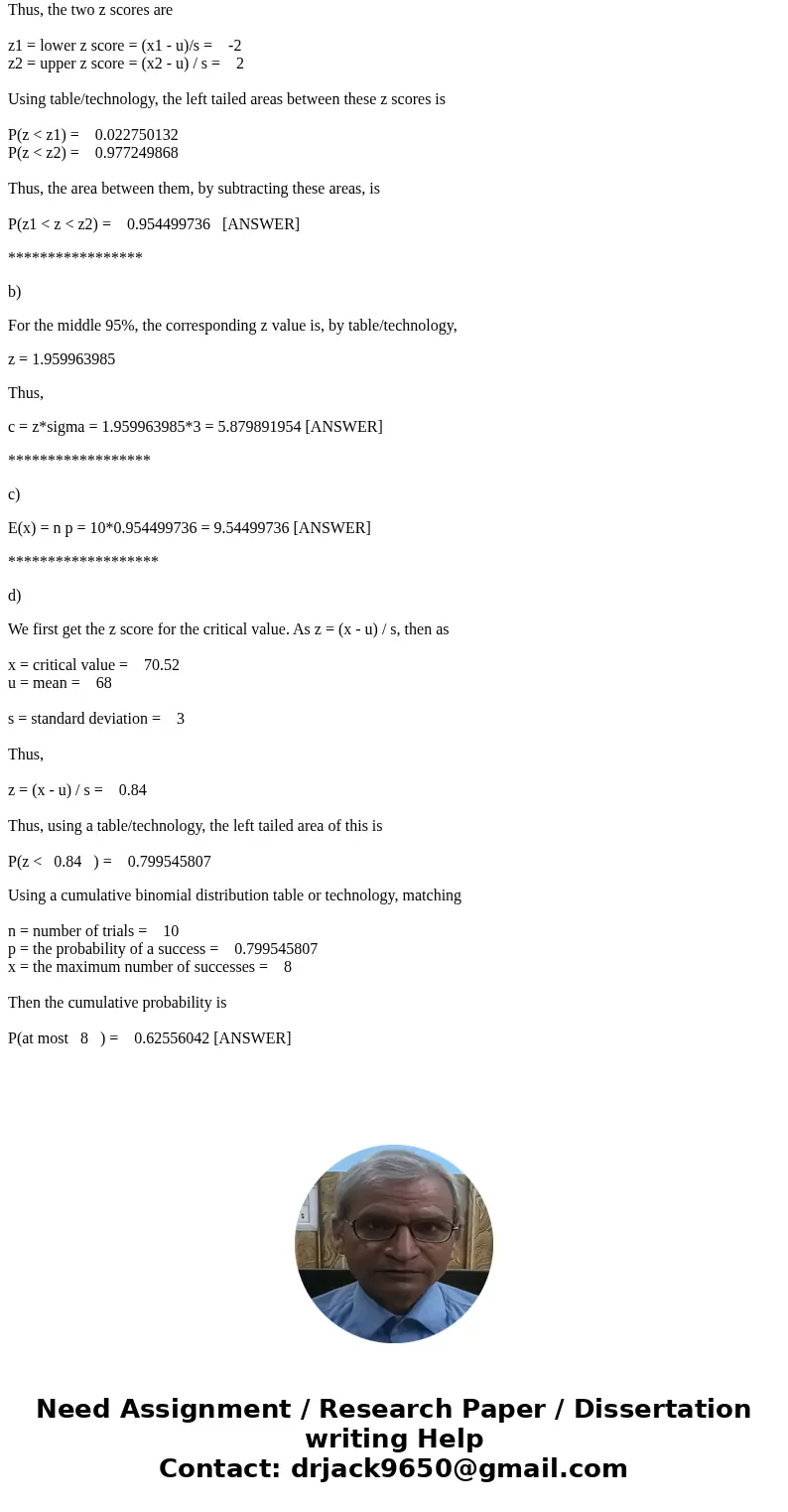The Rockwell hardness of a metal is determined by impressing
Solution
a)
We first get the z score for the two values. As z = (x - u) / s, then as
x1 = lower bound = 62
x2 = upper bound = 74
u = mean = 68
s = standard deviation = 3
Thus, the two z scores are
z1 = lower z score = (x1 - u)/s = -2
z2 = upper z score = (x2 - u) / s = 2
Using table/technology, the left tailed areas between these z scores is
P(z < z1) = 0.022750132
P(z < z2) = 0.977249868
Thus, the area between them, by subtracting these areas, is
P(z1 < z < z2) = 0.954499736 [ANSWER]
*****************
b)
For the middle 95%, the corresponding z value is, by table/technology,
z = 1.959963985
Thus,
c = z*sigma = 1.959963985*3 = 5.879891954 [ANSWER]
******************
c)
E(x) = n p = 10*0.954499736 = 9.54499736 [ANSWER]
*******************
d)
We first get the z score for the critical value. As z = (x - u) / s, then as
x = critical value = 70.52
u = mean = 68
s = standard deviation = 3
Thus,
z = (x - u) / s = 0.84
Thus, using a table/technology, the left tailed area of this is
P(z < 0.84 ) = 0.799545807
Using a cumulative binomial distribution table or technology, matching
n = number of trials = 10
p = the probability of a success = 0.799545807
x = the maximum number of successes = 8
Then the cumulative probability is
P(at most 8 ) = 0.62556042 [ANSWER]


 Homework Sourse
Homework Sourse